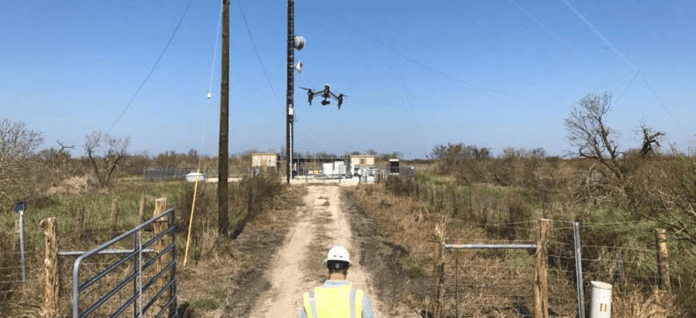AT&T hopes to use LTE-connected drones to support FirstNet, the nationwide public safety network the carrier is building for the U.S. government. AT&T already uses drones to inspect cell towers and test antenna patterns, and recently the company has started testing mobile cell sites carried by drones.
“We see a lot of potential in drones supporting FirstNet,” said Art Pregler, AT&T’s director for unmanned aerial systems. “We’ve presented our solutions to FirstNet and there were very well received.”
First responders already use drones to photograph disaster areas, and they can also be used to deliver supplies to places rescue workers can’t reach.
“We’re looking at augmenting that with drones having LTE capabilities to establish immediate connectivity for first responders, and it’s dedicated to them wherever they need it,” explained Pregler.
AT&T has been testing drones that carry LTE radios. The first public test took place earlier this year in Georgia. Pregler said the tethered drone used in that test was 4.5 feet in diameter, had eight rotors and carrier two radios. More recently AT&T followed up with another test using a helicopter drone that can carry four radios without exceeding the 55-pound weight limit that triggers a requirement for a special federal license. Pregler said AT&T is experimenting with several different spectrum bands in its drone tests.
“We’re experimenting with different radios – Band 14 radios for first responders and other radios for other parts of our network spectrum so that we can provide services not only to first responders but also to the general public,” Pregler said. He sees two primary use cases for the flying cell sites: disaster recovery areas and large venues that require higher network capacity. “We’re not operational yet with this, we’re still testing, but we’re making pretty good progress,” he said.
Meanwhile, Pregler’s group is also busy with AT&T’s active drone operations: network testing and inspection. After the recent hurricanes and floods in the U.S., AT&T used drones to photograph its towers, wireline assets and central offices in the affected areas.
“We embedded our drone crews with our response crews, the technicians who were actually doing the repairs, so that they could have immediate access to the data,” Pregler said. Drones were primarily used to survey sites, but Pregler said they were also be part of the repair effort. One of the drones was used to carry a line of fiber across a river that had flooded its banks, enabling AT&T to reestablish service in the area.
Follow me on Twitter.

